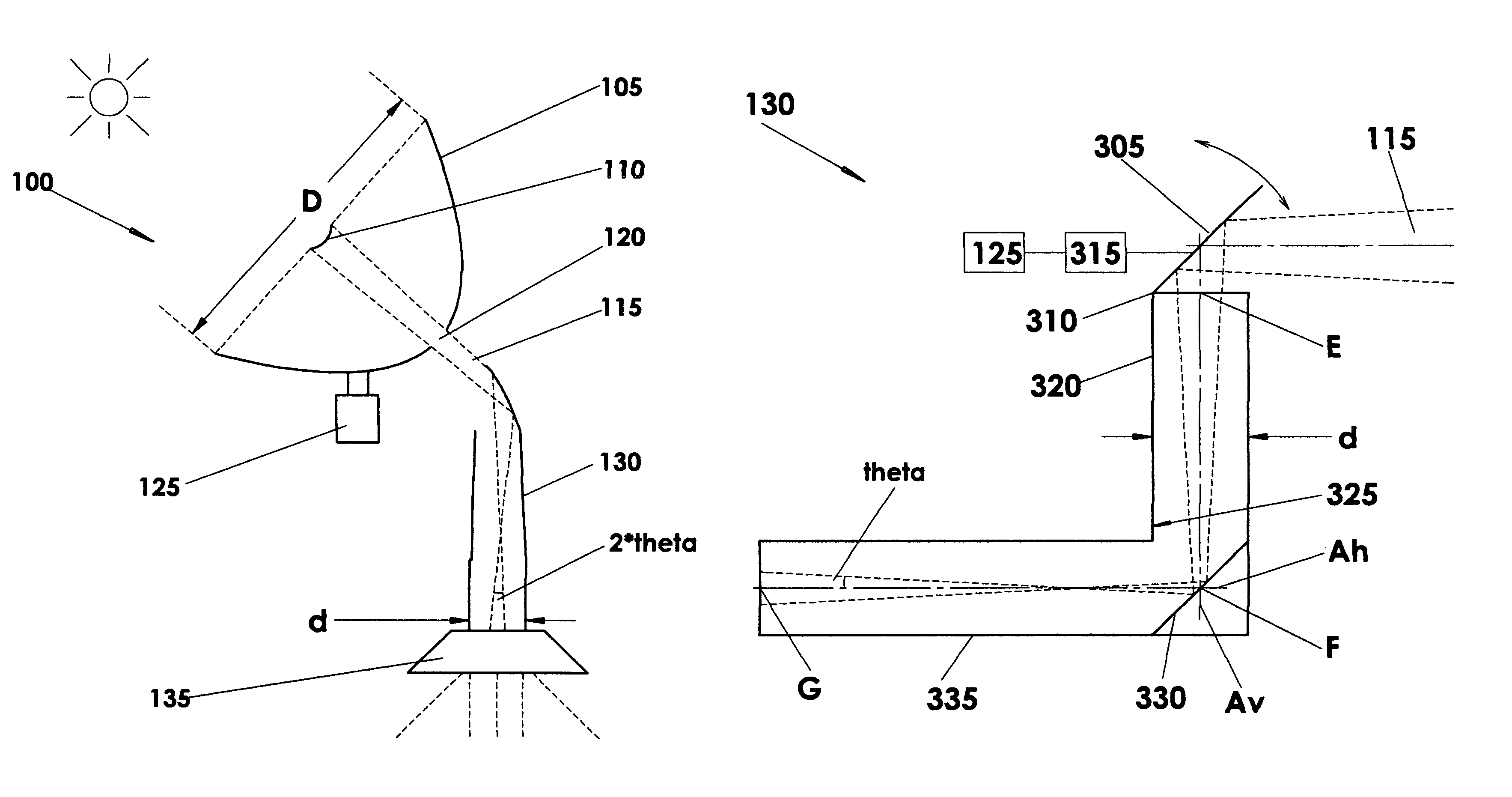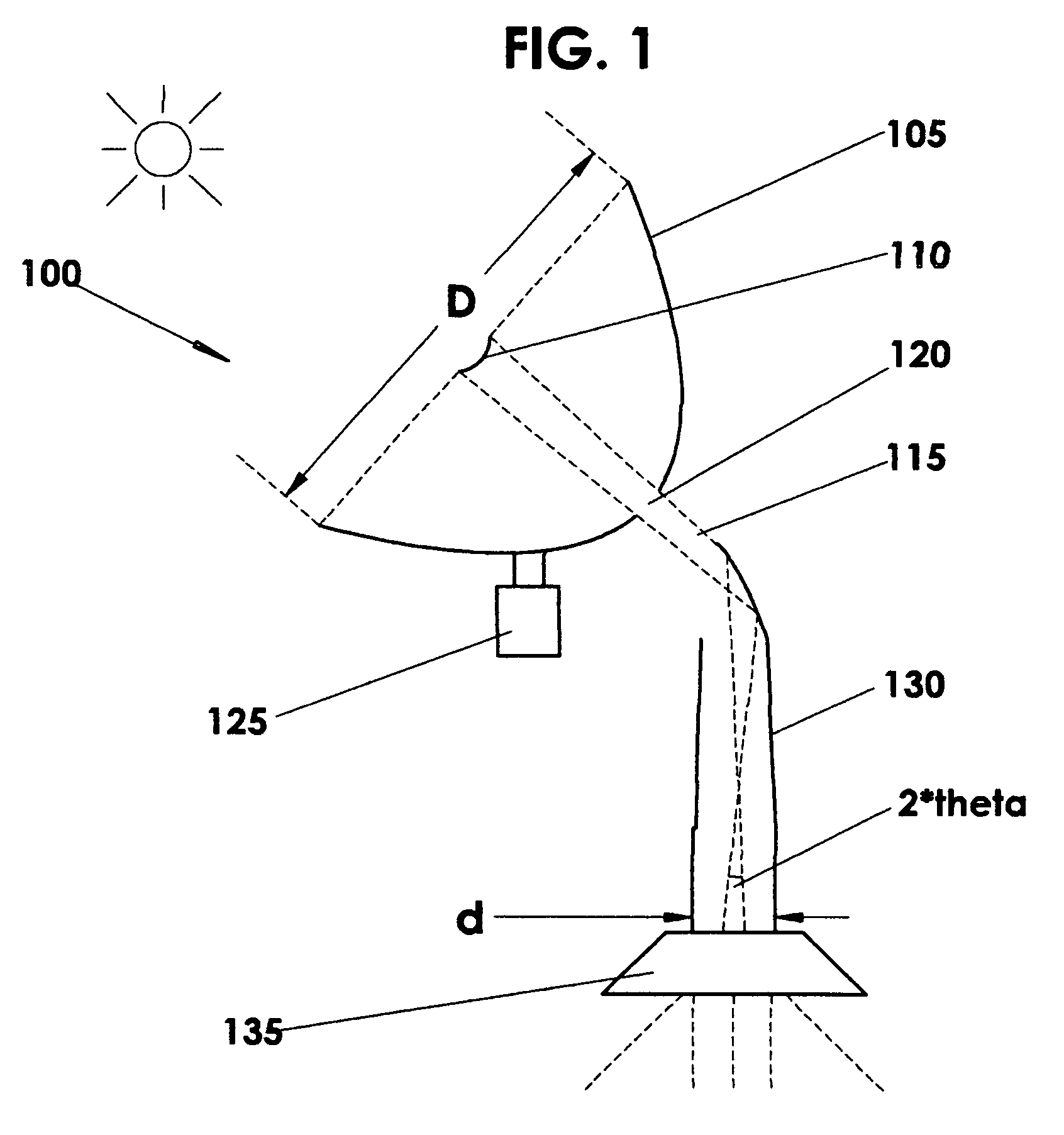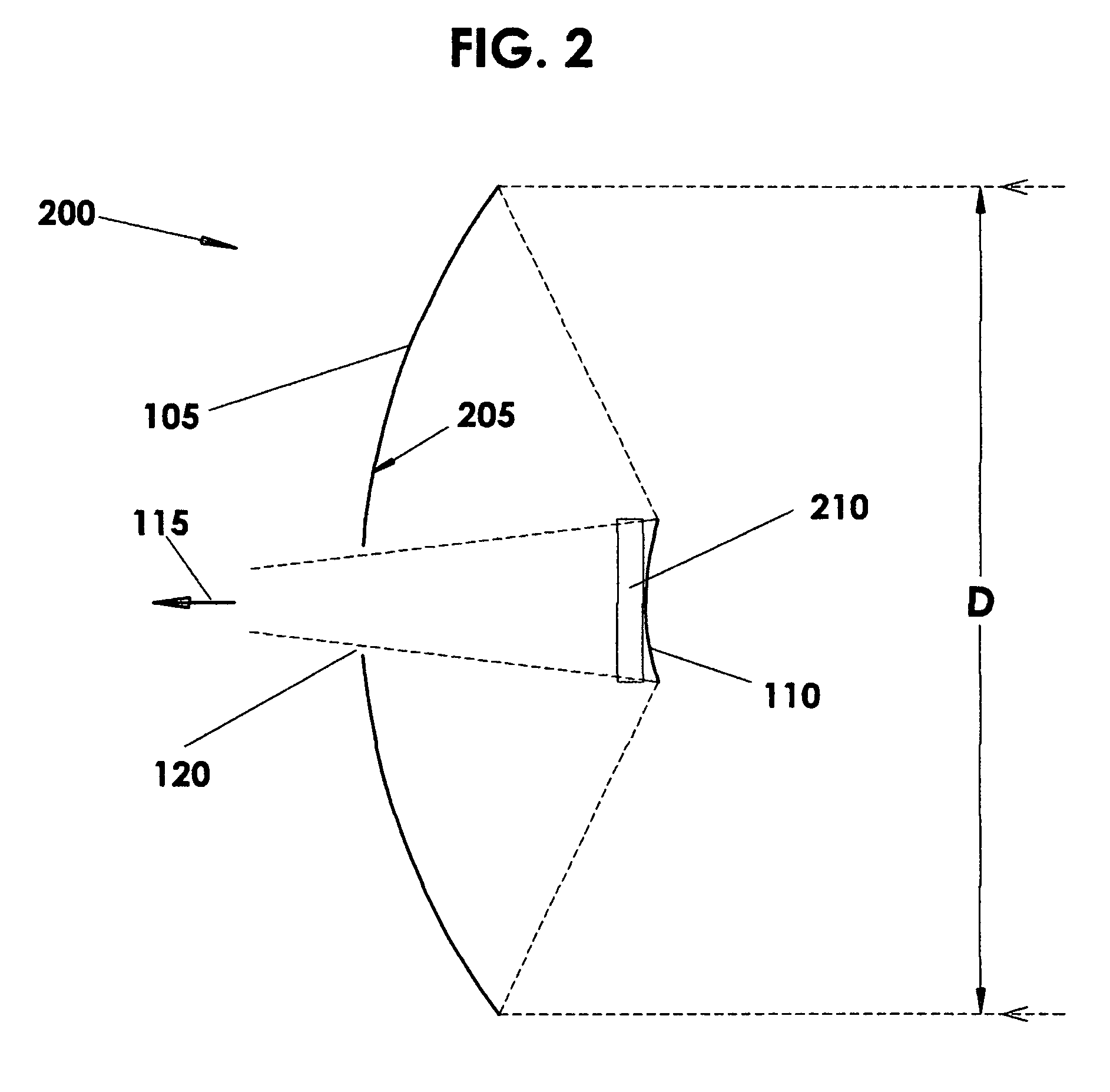Low numerical aperture (low-NA) solar lighting system
a solar lighting and numerical aperture technology, applied in the field of solar energy and lighting, can solve the problems of limiting the collection and transmission of solar light tubes, preventing widespread acceptance of solar lighting technology, and reducing so as to reduce the number of loss-inducing reflections, improve the luminosity, and optimize interior lighting
- Summary
- Abstract
- Description
- Claims
- Application Information
AI Technical Summary
Benefits of technology
Problems solved by technology
Method used
Image
Examples
embodiment 400
[0050]FIG. 4 shows an alternate embodiment 400 of the low numerical aperture optimizer 130 for the low numerical aperture lighting system 100. The low numerical aperture optimizer may further comprise a second highly reflective mirror 325, and a diverging refractive lens 410 (a.k.a. a negative lens). This embodiment may comprise the primary and secondary light concentrator (not shown here) as shown in FIG. 1 and FIG. 2.
[0051]In some installations, the configuration of the light source, the building and the primary light concentrator may be such that the low-NA optimizer 130 is not above the lighting fixture 135. In some of these embodiments, the alternate embodiment 400 of the low numerical aperture optimizer may be suitable.
[0052]As shown in FIG. 4, the concentrated light 115 enters the low-NA optimizer 400 along an optical axis “Av.” To achieve an optimal low-NA concentrated light, there may be one or more of the highly reflective mirrors 305 and 325 to direct the concentrated lig...
embodiment 500
[0057]FIG. 5 shows a different embodiment 500 of the low numerical aperture optimizer 130 for the low numerical aperture lighting system 100. This embodiment may comprise the highly reflective mirror 305, the highly reflective mirror hinge 310, the highly reflective mirror controller 315, the solar tracker 125, a semi-circular light guide 505, and the highly reflective film 325 (not shown). This embodiment may comprise the primary and secondary light concentrator (not shown here) as shown in FIG. 1 and FIG. 2.
[0058]In lieu of the light guide mirror 330, the low-NA optimizer 500 has an inside coating of the highly reflective film 325 to optimize the concentrated light 115 to a low-NA. Once again, the optical axis lines Av and Ah are perpendicular to each other, with the semi-circular light guide 505 shaped to optimize the low numerical aperture of the concentrated light within the thermodynamic limit.
embodiment 600
[0059]FIG. 6 shows another embodiment 600 of the low numerical aperture optimizer 130 for the low numerical aperture lighting system 100. The low numerical aperture optimizer 600 may comprise the primary and secondary light concentrator (not shown here) as shown in FIG. 1 and FIG. 2. This embodiment may comprise the highly reflective mirror 305, connected to the highly reflective mirror controller 315, which works in coordination with solar tracker 125 to align highly reflective mirror 305 so that concentrated light 115 enters the upper light guide 605 properly aligned to optical axis Av. The embodiment 600 may also comprise the light guide mirror 330 and lower light guide 335, although these are optional as described in FIG. 3.
[0060]This embodiment of the low-NA optimizer 600 differs from other embodiments in that the upper light guide 605 may be in the shape of a reverse compound parabolic concentrator (CPC) or other shape of a reverse conic concentrator. The upper light guide 605...
PUM
 Login to View More
Login to View More Abstract
Description
Claims
Application Information
 Login to View More
Login to View More - R&D
- Intellectual Property
- Life Sciences
- Materials
- Tech Scout
- Unparalleled Data Quality
- Higher Quality Content
- 60% Fewer Hallucinations
Browse by: Latest US Patents, China's latest patents, Technical Efficacy Thesaurus, Application Domain, Technology Topic, Popular Technical Reports.
© 2025 PatSnap. All rights reserved.Legal|Privacy policy|Modern Slavery Act Transparency Statement|Sitemap|About US| Contact US: help@patsnap.com



